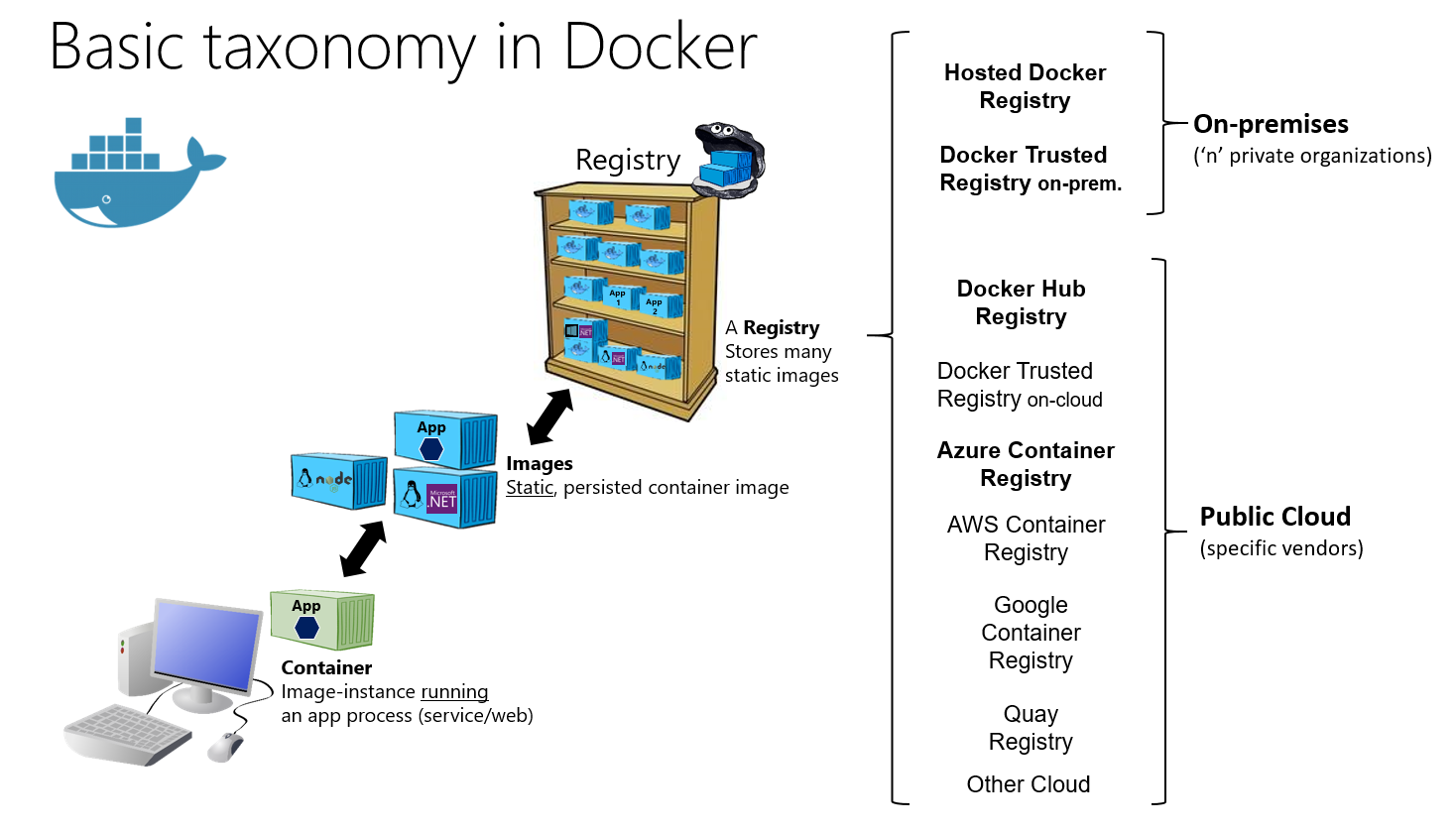Note
Access to this page requires authorization. You can try signing in or changing directories.
Access to this page requires authorization. You can try changing directories.
Tip
This content is an excerpt from the eBook, .NET Microservices Architecture for Containerized .NET Applications, available on .NET Docs or as a free downloadable PDF that can be read offline.

When using Docker, a developer creates an app or service and packages it and its dependencies into a container image. An image is a static representation of the app or service and its configuration and dependencies.
To run the app or service, the app's image is instantiated to create a container, which will be running on the Docker host. Containers are initially tested in a development environment or PC.
Developers should store images in a registry, which acts as a library of images and is needed when deploying to production orchestrators. Docker maintains a public registry via Docker Hub; other vendors provide registries for different collections of images, including Azure Container Registry. Alternatively, enterprises can have a private registry on-premises for their own Docker images.
Figure 2-4 shows how images and registries in Docker relate to other components. It also shows the multiple registry offerings from vendors.

Figure 2-4. Taxonomy of Docker terms and concepts
The registry is like a bookshelf where images are stored and available to be pulled for building containers to run services or web apps. There are private Docker registries on-premises and on the public cloud. Docker Hub is a public registry maintained by Docker, along the Docker Trusted Registry an enterprise-grade solution, Azure offers the Azure Container Registry. AWS, Google, and others also have container registries.
Putting images in a registry lets you store static and immutable application bits, including all their dependencies at a framework level. Those images can then be versioned and deployed in multiple environments and therefore provide a consistent deployment unit.
Private image registries, either hosted on-premises or in the cloud, are recommended when:
Your images must not be shared publicly due to confidentiality.
You want to have minimum network latency between your images and your chosen deployment environment. For example, if your production environment is Azure cloud, you probably want to store your images in Azure Container Registry so that network latency will be minimal. In a similar way, if your production environment is on-premises, you might want to have an on-premises Docker Trusted Registry available within the same local network.
